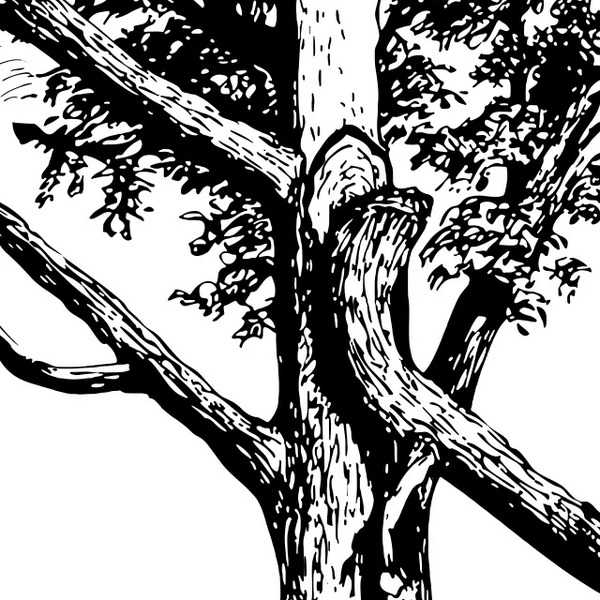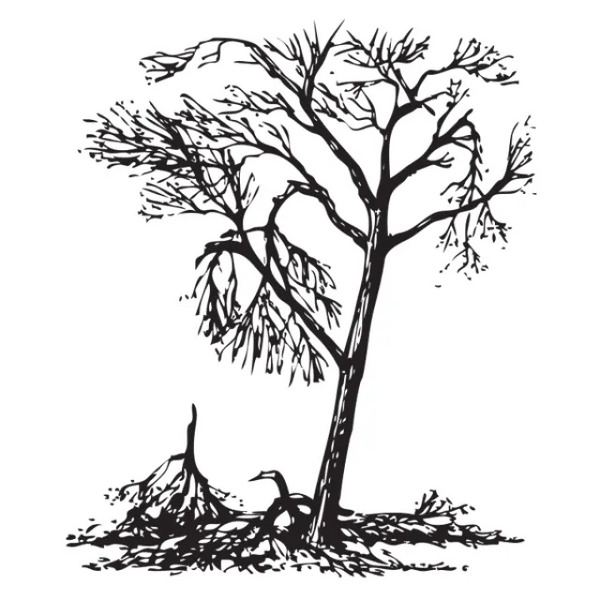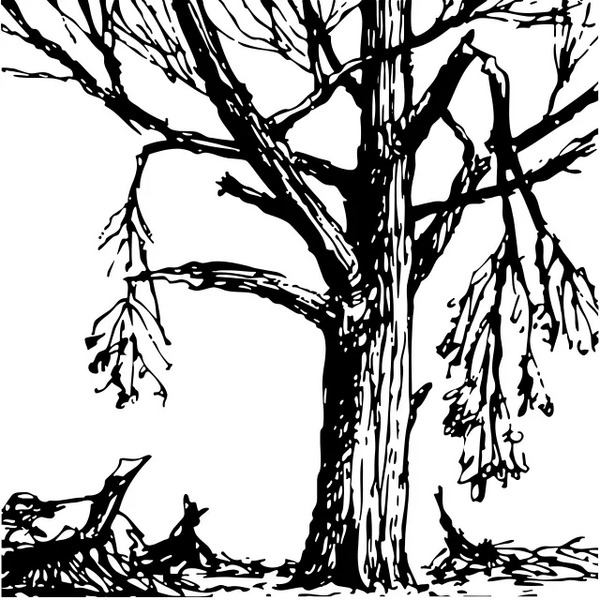Trees can recover from storm damage. Oftentimes, storms leave trees looking bare and deflated but looks can be misleading. Before deciding that your storm-damaged tree can’t be saved, ask yourself:
- Other than the storm damage, is the tree healthy and structurally sound?
If the tree is healthy, not a hazard, and didn’t suffer major structural damage, it will usually recover if you apply first aid measures right after the storm.
- Are major limbs broken?
If a limb is broken, the larger it is, the harder it will be for the tree to recover. If most of the main branches are gone, the tree might have a low chance of surviving.
- Has the central leader, or main upward-growing stem, been lost?
For species where the central leader is crucial for upward growth or appearance, it may be a judgment call. The tree might survive without its leader, but it will likely be stunted or misshapen compared to its former self.
- Is at least 50% of the tree’s crown, the branches and leaves, still intact?
This is a good rule of thumb for assessing tree survivability. A tree with less than half its crown remaining may not be able to produce enough foliage to sustain itself through another season.
- How large are the wounds from broken branches or damaged bark?
The larger the wound compared to the limb size, the less likely it is to seal. This makes the tree more vulnerable to disease and pests. For example, a two- to three-inch wound on a 12-inch diameter limb could seal over with new bark within a couple of years.
- Are there remaining branches that can develop a new branch structure?
The remaining branches will grow more vigorously as the tree tries to replace its lost foliage. Check if there are branches that can eventually restore the tree’s appearance.
- Is the tree a desirable species for its location?
If the tree is in the wrong location, such as a large tree under a power line. or an undesirable species for the location, like messy fruit or an invasive species, then it may be best to remove it now.
Next steps
Once you’ve assessed your tree, determine which category it falls into:
Keeper
If damage is limited, you can prune broken branches and let the tree begin to recover.

An easy call: A mature shade tree can usually survive the loss of one major limb. The broken branch should be pruned back to the trunk. In the months to follow, large wounds should be closely monitored for signs of decay.

Minor Damage: Although the tree has been damaged, enough strong limbs may remain on a healthy tree to make saving it possible.

Too Young to Die: Young trees can handle a lot of damage and recover quickly. If the central leader is intact and the structure for future branching remains, remove the broken branches and let the tree close over the wounds and recover on its own.
Wait and see
If a valuable tree appears to be a borderline case, resist the urge to cut it down immediately. Take your time. Carefully prune any broken branches and let the tree have time to recover. You can make a final decision about the tree later.

Easy Does It: Avoid pruning too much at once. The tree needs as many leaves as possible to get through the next growing season. Only remove the damaged limbs and give the tree time to recover.

Hold Off: A healthy, mature tree can recover even if several major limbs are damaged. For large trees, it’s best to hire a certified arborist to evaluate the damage and safely handle any necessary pruning and branch removal.
Remove
Some trees can’t be saved or aren’t worth saving. If the tree is weakened by disease, has a split trunk, or is missing more than 50% of its leaves, it probably won’t survive.

Tree Tragedy: This otherwise healthy young tree has lost too much of its crown—the leafy top that is essential for survival. It likely won’t grow enough new branches and leaves to get the nutrients it needs and will probably never regain its original shape.

Hopeless Case: Only the trunk is left of this tree. The few remaining branches don’t have enough leaves to help the tree survive another growing season.

Farewell to a Friend: A rotten inner core or weak branching can cause a split trunk. The damage is too severe for the tree to recover from, and it’s lost the vital sap connection between the roots and leaves. This tree should be removed.
